The Los Angeles Through Positive Eyes workshop, held in April 2011, highlighted the experience of long-term survivors, those who have lived with HIV for more than twenty or thirty years, some from the very first years of the epidemic. The early availability of medications in the global North has made survival possible, even as it has reduced or even eliminated one of the greatest causes of HIV stigma: physical disfigurement. Many people living with HIV no longer appear sick, while others report suffering from the long-term side effects of medication.
United States AIDS Epidemic, as of 2011
- Number of people living with HIV
- 1 million
Transmission Category (numbers)
- Men who have sex with men
- 548,000
- Injection drug use
- 139,700
- Heterosexual contact
- 273,500
Treatment
Antiretroviral therapy has been available since 1996 but despite state-aided programs, low-income and uninsured Americans have less access than others.
- Percent diagnosed
- 86%
- Percent in HIV care
- 40%
- Percent on antiretroviral treatment
- (Not published)
- Percent undetectable virus
- 30%
Key Events
- 1992
- AIDS is the number one cause of death for American men aged 25–44.
- 1998
- Centers for Disease Control issues the first national treatment guidelines for the use of antiretroviral therapy.
- 2006
- Bush administration strengthens federal funding for abstinence-only sex education programs.
- 2008
- Same-sex marriage legalized in California.
- 2010
- The Obama administration releases the first comprehensive national HIV strategy.
Update 2019
In 2016, 1.1 million Americans were living with HIV. 56% of new infections were occurring in black and Latino men who have sex with men (1% of the population). The percentage of Americans diagnosed with HIV who were in care increased to 63% and those who were virally suppressed increased to 51%.
Since 2014 there has been a significant expansion of pre-exposure prophylaxis (PrEP), but the program still reaches less than 20% of those who would benefit from it.
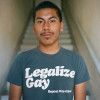
Cesar
I was born in East L.A. and started being sexually active when I was thirteen. I was really curious and experimented a lot. When I was in high school, I wanted to know my HIV status, because I had …
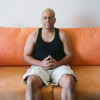
Dwayne
I was in Atlanta, Georgia, and I was working with this very professional corporate company, traveling all over the country to motivate people to be amazing in their work and help them make money. I …
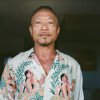
Guillermo
A few years ago there was a fire in Griffith Park and the area where I normally hike was destroyed. I felt devastated—it was a blackened atmosphere, with gnarled trees. But then I stepped back and …
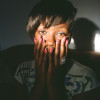
Jazmine
Back in 2008, when I was sixteen, I was having stomach problems. I went to the hospital and the doctor said I had a cyst on my ovary and he was going to remove it. When he did the surgery, he found …
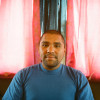
Jose
How HIV entered my life is pretty simple. I had unprotected sex with someone who was infected, and he didn’t know. He was arrested for something minor and when he was in jail they tested him and they …
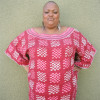
LaVera
When I found out I was HIV-positive, I had just re-entered the United States after a trip to Nigeria, and I was having some pregnancy-related complications. When the doctor told me, I broke down and …
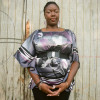
Lynnea
When you’re a person living with HIV, you need your friends, to get past the stigma and also to share moments of genuine love. I think I was born with HIV. My mother has it, and one of the ways it …

Mark
In 1981, I moved from Minneapolis to New York City and partied on Fire Island all summer. That was the summer that HIV arrived. The gentleman I was dating then died in early 1983. He was probably one …
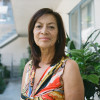
Nancy
When I was a young child I had polio. I grew up with a brace on my right foot, I had a limp. With all that, and being skinny and awkward, I was laughed at. But being stigmatized for having HIV is …

Ralph
Everybody always goes, “Why do you walk with a cane?” I’ve been known to say, “Oh, I have a slight case of AIDS.” I got my test results on April Fools’ Day, one month before my twenty-fifth birthday. …
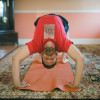
Rodney
I found out that my partner had been layering crack in our pot. He would put it in without me knowing it. One day I reached into his pocket and I found this little white square. And then I started …
Supporters
Through Positive Eyes in Los Angeles was organized in partnership with the HIV/AIDS Prevention Unit of the Los Angeles Unified School District. Major funding was provided by The Herb Ritts Foundation, with additional support from the City of Los Angeles AIDS Coordinator’s Office and UCLA.